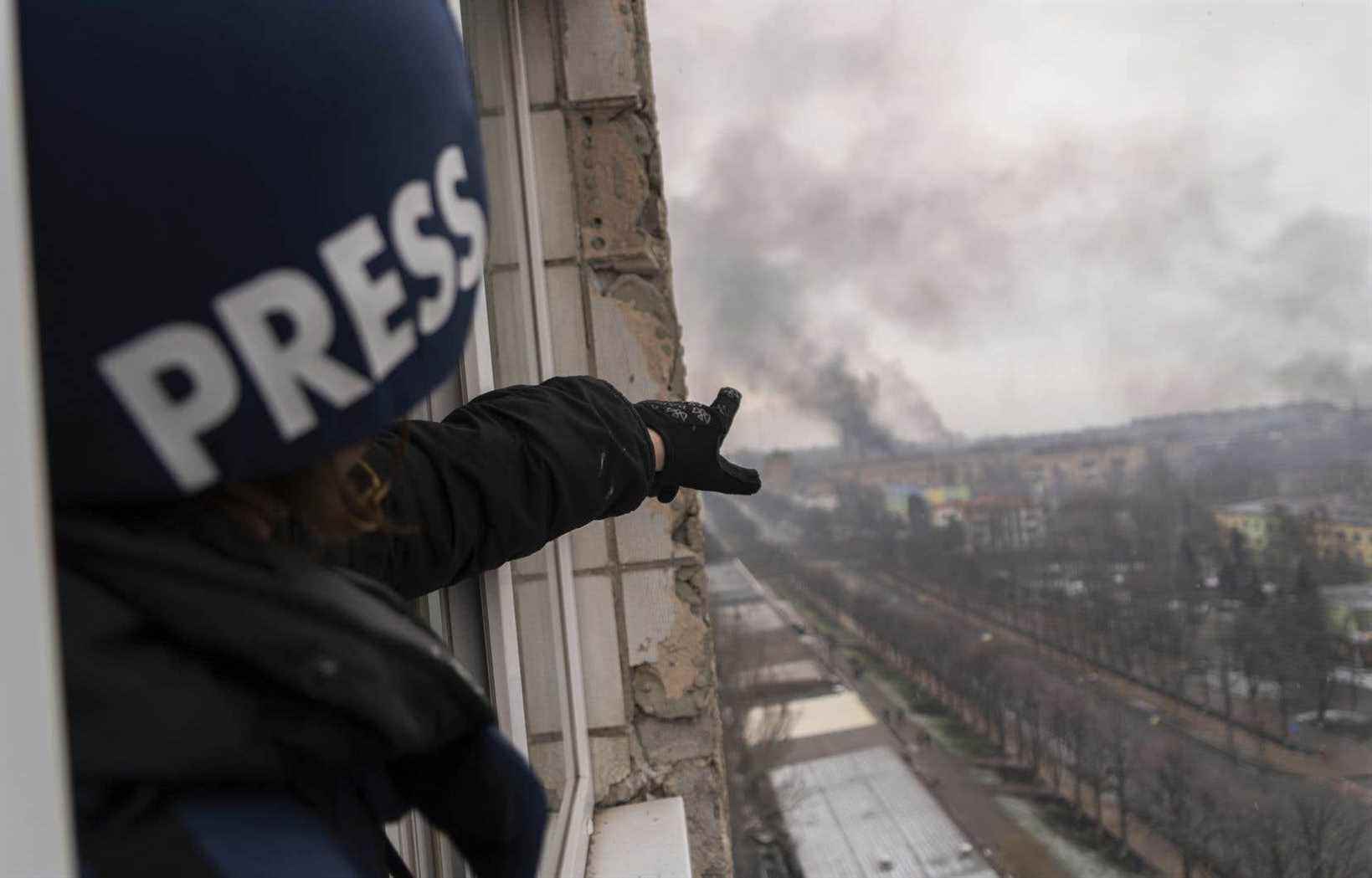With their foreheads all around their heads, women journalists are very special correspondents in war zones, reporting the facts in a small team made up of a fixer, a translator and a photojournalist. They are therefore no longer rare up to the contour of the front line. It has not always been the case. They are men who accompanied the troops of the Allies (from Marcel Ouimet to René Lévesque) during the Second World War, in fact, should we write, the Second World War since the specter of a Third World War haunts us?
What drives seasoned female journalists to throw themselves into the mouth of the wolf at the risk of their lives? The same reasons as their male colleagues? If a picture is worth a thousand words, I cannot say which image best captures the cruelty and absurdity of the war in Ukraine, which account of the evolution of the fighting, which article strikes us as the most heartbreaking. Understanding this world going crazy is not an easy task, nevertheless it is a moral obligation as much as a duty of memory as for the pages of history which are written and illustrated under our eyes.
A striking consensus emerges from the words and pens of Maryse Burgot and Dorothée Olliéric of France 2, Clarissa Ward of CNN, Marie-Ève Bédard of Radio-Canada, Isabelle Hachey of The Press (who takes up the torch from his idol Michèle Ouimet): for as long as they have been covering conflict zones, they have never witnessed such fervent determination on the part of a people, in this case Ukrainian, to not to be defeated, to stand up to the invader. If we come to share their dismay and their pain, would we have the same courage as them?
The piece of the puzzle
Like probably so many other fellow citizens, I spend more than an average of 15 minutes a day trying to understand the ins and outs of this dangerous conflict, not just for Ukrainians, but for all of us Westerners. It’s not just their war, it’s ours. However, we lack historical perspectives to fully grasp the stakes of this complex war, which can lead to the worst scenario. The quest for truth to which we are invited would be impossible without the courage of journalists in the field.
Michel Scott, TF1 reporter, on his return from his assignment in Ukraine, sums up his mission well, it is worth quoting him: “In a world where the truth is reduced to the rank of opinion, where untruths , we must continue to show, to film, to tell. There is an unexpected mobilization of the West, a revitalization of NATO, a rebirth of the European Union, because public opinion in the West is witnessing this through the work of the press. Without a journalist, a huge piece of the puzzle is missing. And what a puzzle!
In an interview with Fareed Zakaria on CNN recently, President Zelensky stressed that he lets his young children find out what they want about the war so that they can better grasp the seriousness of what is happening. In 1962, during the Cuban missile crisis and in every newscast on an American television channel dealing with the war in Vietnam, it was not considered preferable at the time to give us warnings about the shocking images that would follow, encourage us to look away. My younger generation, including, faced the atrocities of war. We have seen raw truths.
In chorus, we chanted, “Never again war! “. And yet. It seems to me that if we want to continue to strive for peace, we must let today’s young people ask all the questions that torment them and provide them with answers, however rudimentary or partial, focusing on the information provided to us by the rigorous media. Cultivating the desire to understand through validated information, rather than disinformation, is the challenge of this present century, especially as we see the drift to which the propaganda that the Kremlin imposes both on its journalists and to his people.
